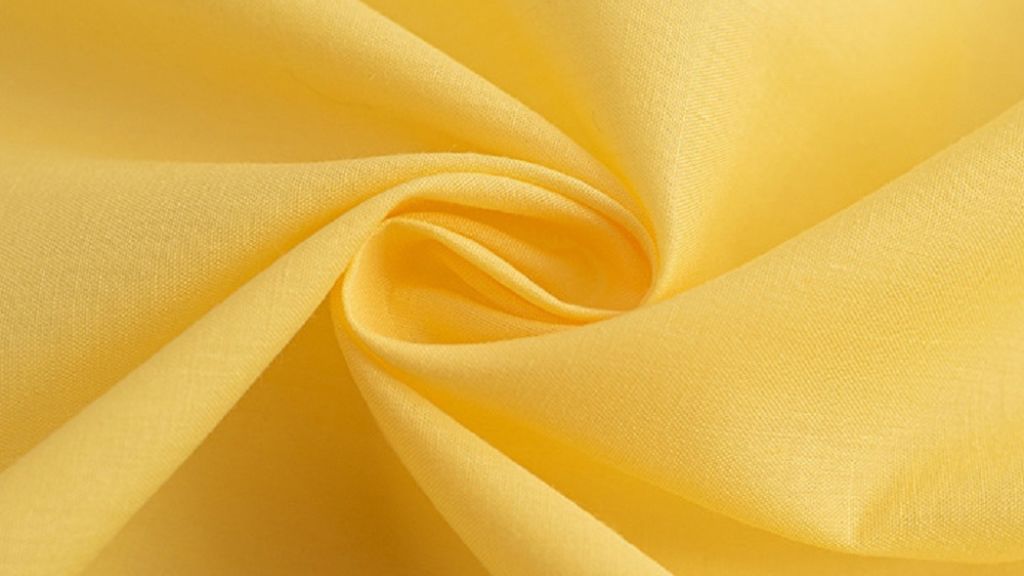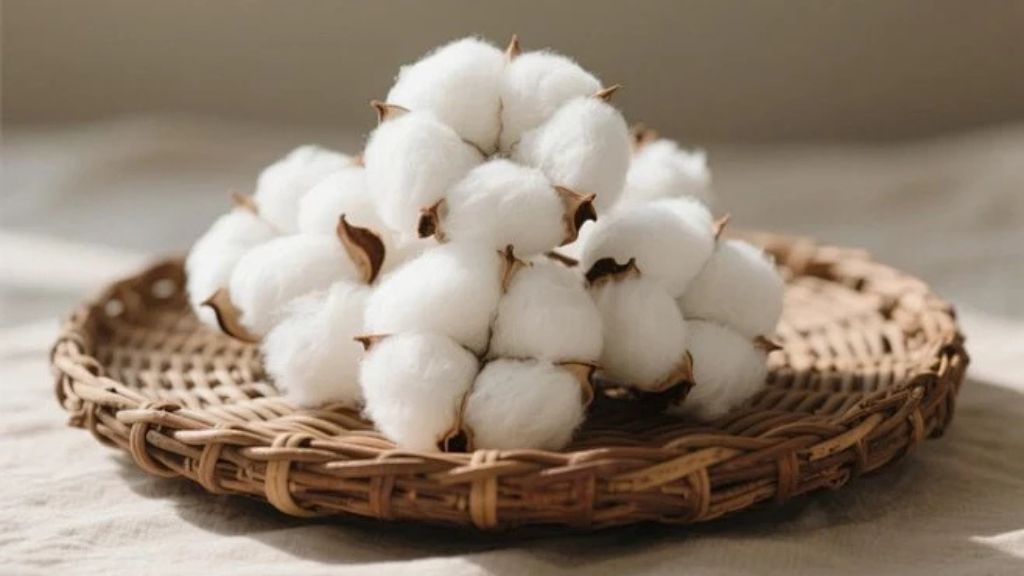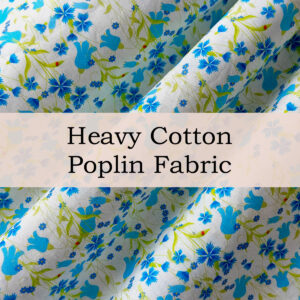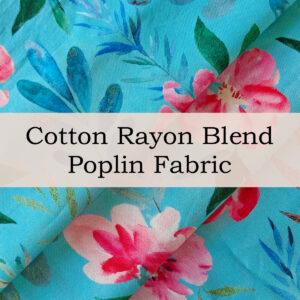Textile Fabric Guide: What Is Poplin Fabric?

Poplin fabric, also known as popeline or tabinet, is a lightweight, tightly woven textile that is popular for its crisp yet comfortable feel. It is commonly used in clothing such as shirts, dresses, trousers, and uniforms. In this comprehensive guide, we’ll explore what poplin fabric is, its history, manufacturing process, key characteristics, common uses, pros and cons, comparisons with other fabrics, and easy care tips to keep it looking fresh. Let’s get started!
What Is Poplin Fabric?
Poplin is a plain weave fabric characterized by its tight construction and fine texture. Rather than being defined by its weight or sheen, poplin stands out for its unique over-and-under interlacing of warp and weft threads. The fine warp (vertical) threads are usually 2 to 3 times denser than the slightly thicker weft (horizontal) threads. This density difference creates a subtle diamond or vertical rib pattern on the surface, giving poplin a smooth, non-slippery feel and softly reflecting light for a natural sheen.
History and Origin of Poplin
Poplin’s story dates back to the 15th century in Avignon, France, where the fabric was first woven for the Papal Court. Its name comes from papeline (sometimes called papelino), a term inspired by the Pope’s residence in the city. Originally, poplin was a blend of silk and wool fabric used to make church clothing and formal gowns. By the 19th century, the production method had spread to England, where weavers began to use cotton instead of silk and wool. The new cotton poplin retained the smooth, crisp qualities of the original, but was far more affordable and practical. Today, poplin is widely used in a range of clothing and home textile products, and it is easier than ever to find high-quality, reasonably priced poplin cloth.
What Is Poplin Fabric Made Of?
Nowadays, Poplin fabric is primarily made from cotton, although it can also be woven from a variety of other fibers. The traditional poplin weave uses 100% cotton, which makes the fabric soft, breathable and durable. However, polyester, rayon, silk, and wool are also sometimes blended with cotton to enhance specific properties like strength, stretch, sheen, or wrinkle resistance.

The Manufacturing Process of Poplin Fabric
Raw Material Selection
The production of poplin begins with the selection of raw fibers (mostly cotton, sometimes blended with polyester, silk or other fibers). The fibers are cleaned, carded (arranged neatly), and spun to form the unique structure of poplin.
Yarn Preparation
Yarn preparation for poplin involves two main processes: open-end carding and combing. Open-end carding is economical and efficient, while combing removes short fibers and impurities, producing smoother and more uniform yarns.
Weaving Process
The typical warp-to-weft density ratio of poplin is 1.8–2.2:1. Its high warp density creates a subtle diamond-like rib pattern on the fabric surface. In addition, various decorative weaving techniques, such as shadow stripes, satin stripes, and jacquard patterns, can be used to create poplin with various patterns.
Dyeing and Finishing
Poplin undergoes a range of dyeing and finishing processes, including bleaching, dyeing, and printing. Bleached poplin provides a clean base suitable for further coloring or printing. Dyed poplin gains rich, uniform colors, while printed poplin features various patterns applied through textile printing techniques.
Post-Processing
Post-processing treatments can improve the performance and appearance of poplin. Singeing removes excess surface fibers, making the fabric smoother. Scouring chemically treats the fabric to improve absorbency and breathability. Mercerizing treatment can increase luster, giving the fabric a silk-like sheen.
Types of Poplin Fabric
Poplin comes in various types, each with unique characteristics and uses. Here are some common types of poplin fabric:
Cotton Poplin
Cotton poplin is the most common and widely used type of poplin. Known for its breathability, softness, and comfort, it is ideal for summer clothing such as shirts, dresses, and lightweight bedding.
Polyester Poplin
Polyester poplin is a more durable and wrinkle-resistant option. It is often used in uniforms or everyday workwear due to its easy-care properties. While it may not be as breathable as cotton, polyester poplin fabric still performs well.
Stretch Poplin
Stretch poplin is mostly a cotton-spandex blend, but you’ll also find poly-spandex versions in fast fashion and functional clothing. This type of poplin is perfect for making well-fitting garments, such as slim-fit shirts, dresses, trousers, and skirts.
Silk Poplin
Silk Poplin, made from 100% silk or a silk blend, is highly regarded for its luxurious feel and natural sheen. It’s breathable, feather-light, and drapes beautifully, often used in high-end fashion, such as elegant blouses, dresses, bridal gowns, and even luxury bedding linens. Compared to other types of poplin, silk poplin fabric has an extremely soft and smooth feel, adding a more refined atmosphere.
Rayon Poplin
Rayon Poplin is a slightly lustrous, smooth, and soft fabric made from rayon fibers, which are derived from plant materials like wood pulp. It features the same plain weave construction as traditional poplin, creating a crisp, even texture. However, compared to cotton or polyester poplin, rayon poplin fabric has poorer durability. Rayon fibers are more delicate and prone to damage from abrasion, sunlight, and frequent washing. This type of fabric is more prone to deformation, shrinkage, or wrinkling over time. Despite its relatively lower durability, rayon poplin is favored for its smooth texture and elegant drape, but it does require more careful handling to maintain its appearance and longevity.
Wool Poplin
Wool poplin, made from fine wool or wool blends, is a relatively heavy fabric. It is mainly used in autumn and winter clothing, such as coats, jackets, trousers, and suiting. To enhance its performance, it is often combined with other fibers such as polyester, nylon, or elastane to improve durability, shape retention, and elasticity.
Key Characteristics of Poplin Fabric
Smooth and Crisp Texture
Poplin has a very smooth surface with a subtle, crisp hand feel. Its tight plain-weave structure creates tiny, even diamond-shaped grains on the fabric surface, making the fabric smooth to the touch while still maintaining a bit firm, so it doesn’t feel limp like some looser fabrics.
Lightweight Yet Strong
Although poplin feels light and soft against the skin, its dense weave makes it surprisingly strong and durable. It resists tearing and holds its shape well, better than many other cotton fabrics, though high-count poplin (such as 120S+) is less strong in the weft direction.
Good Breathability
Poplin’s plain-weave structure forms small, uniform pores between the yarns. These pores allow air to circulate freely, preventing heat and moisture buildup. Therefore, poplin fabric is perfect for making summer shirts, dresses, and lightweight bedding.
Excellent Moisture Absorption
Among the various types of poplin, 100% cotton poplin fabric has the best moisture absorption, which can quickly absorb sweat from the skin. It also promotes the rapid evaporation of absorbed moisture, keeping the body dry and comfortable, which is quite different from synthetic fiber blends that easily accumulate sweat.
Natural Sheen
Poplin has a soft, subtle natural luster, which can be further enhanced through mercerizing, a common finishing process that smooths the yarns and boosts light reflection. That’s why poplin is so popular for dress shirts, giving the wearer a refined and elegant look without appearing overly shiny.
Wrinkle Resistance
Traditional pure cotton poplin has limited inherent wrinkle resistance. It tends to develop creases at elbows or waist after wearing or washing, often requiring ironing to restore crispness. However, blended poplin (such as cotton-polyester blends) offers improved wrinkle resistance, retaining a neat look with less maintenance.
What Are the Common Uses of Poplin Fabric?
Everyday Clothing
Poplin is widely used in clothing due to its breathability, comfort, and crisp appearance. It is commonly found in shirts, blouses, dresses, trousers, skirts, uniforms, and children’s clothing.
Poplin Dress Shirt Fabric
Poplin performs exceptionally well in dress shirts. Its smooth surface resists wrinkles, making it comfortable for long hours of wear. Lightweight and breathable, it keeps you cool, and its colorfastness allows for vibrant solids or subtle patterns, making it perfect for professional or smart-casual settings.
Accessories and Linings
Poplin is also used in accessories and as a lining material for jackets, bags, and hats. Its lightweight structure and smooth finish make it ideal for applications that require a polished interior or soft touch.
Home Décor
Poplin is known for its refined texture and versatility, making it a great choice for both indoor and home décor. Depending on the fiber, some poplin fabrics, such as polyester blends, can be treated to resist stains or fading, perfect for décor applications.
Specialized Uses
Thanks to its versatility, poplin can also be used in lightweight jackets, workwear, and certain craft or decorative items. When blended with fibers like polyester or spandex, it gains enhanced durability or stretch, expanding its use to performance-focused pieces.
Differences Between Poplin and Other Fabrics
Poplin vs Twill
Poplin and Twill are both woven fabrics, but their structures and textures are quite different. Poplin is a plain weave fabric with a smooth, slightly glossy surface. Twill, on the other hand, has a diagonal weave, which makes it thicker, more textured, and generally more durable. Twill tends to have a more rugged, casual feel compared to Poplin. Therefore, poplin is ideal for shirts, dresses, and lightweight garments, while twill is better suited for making jeans, jackets, and workwear that require extra strength.
Poplin vs Oxford
When choosing the perfect shirting fabric, Poplin and Oxford cloth are frequently mentioned. But do you know they are totally different? Poplin, with its plain weave, is smooth and crisp, offering a clean, polished look. It’s often used to make business shirts or dress shirts for formal occasions. However, Oxford is woven with a basket weave, which gives the fabric a unique texture. Oxford is slightly thicker than Poplin, making it more suitable for casual button-downs. In general, Poplin leans towards being more formal and fresh, while Oxford is more laid-back and comfortable.
Poplin vs Broadcloth
Both Poplin and Broadcloth are plain-weave fabrics, but Broadcloth is generally denser and heavier than Poplin. Although both fabrics share a similar smooth feel, Broadcloth tends to have a more formal impression, whereas Poplin emphasizes comfort and freshness.
Advantages and Disadvantages of Poplin
Advantages of Poplin
Breathable: Poplin is a lightweight fabric with good breathability, which is very suitable for warmer climates or summer wear.
Durable: Poplin is strong and wear-resistant, which means garments and items made from poplin tend to last longer.
Versatile: Poplin can be used in a variety of applications, from shirts and dresses to home décor. Depending on the design, it can be created in different styles.
Easy to Sew: The smooth, even texture of poplin makes it easier to sew, especially for beginners. It holds stitches well and doesn’t shift around much when you’re working with it.
Disadvantages of Poplin
Limited Stretch: Poplin does not have a lot of natural stretch, so it may not be suitable for close-fitting designs or occasions where flexibility is required.
Not Very Warm: As a lightweight fabric, poplin has poor warmth retention. Unless layered with other fabrics, it is not very suitable for wearing in cold weather.
May Wrinkle in Pure Cotton: While cotton poplin is breathable and soft, it can wrinkle easily, requiring regular ironing to keep it looking crisp.
How to Care for Poplin Fabric?
Washing: Machine wash or hand wash in cold or warm water.
Drying: Air dry poplin whenever possible to avoid shrinkage. If you must use a dryer, opt for low heat. Over-drying can lead to fabric wear and shrinkage.
Ironing: Poplin wrinkles easily, especially if it’s 100% cotton. For best results, iron while the fabric is slightly damp. Use a medium heat setting and steam for the smoothest finish.
Storage: Keep in a cool, dry space and avoid prolonged sun exposure.
How to Extend Fabric Life
Avoid Harsh Chemicals: Stick to mild detergents and avoid bleach to preserve the fabric’s color and strength.
Gentle Wash: Wash poplin inside out to minimize fading and damage to the surface.
Proper Handling: Be gentle when folding or ironing. Harsh handling can cause fibers to weaken over time.
How to Print On Poplin Fabric?
Choose the Right Poplin Material
Material matters: Cotton poplin is the easiest to print on because it absorbs ink well. Polyester or blends may require special inks or treatments.
Check weight: Medium-weight poplin (around 100–150 gsm) works best; very light or very heavy poplin can be harder to print evenly.
Select a Printing Method
Screen Fabric Printing
Characteristics: Ideal for bold patterns and solid colors, resulting in clear, long-lasting images.
Advantages: Cost-effective, especially for large orders. The more you print, the cheaper the unit cost becomes.
Best For: Ideal for mass production of fabrics with the same pattern (thousands of meters). Highly cost-effective for continuous patterns or repeated prints.
How It Works: Uses specialized textile inks to transfer the design onto the fabric through a mesh screen. After printing, let it dry and heat-set to fix the colors.
Heat Transfer Printing
Characteristics: Transfers designs from printed sheets or special transfer paper onto the fabric using heat and pressure.
Advantages: Ideal for complex, multi-color, or photographic designs that are difficult to achieve with traditional printing.
Best For: Small to medium batches, or custom designs that require high precision and detail.
How It Works: Place the transfer paper on the fabric and use a heat press to apply even heat and pressure. Then, wait for it to cool down before proceeding with the treatment.
Digital Fabric Printing
Characteristics: Uses specialized inkjet printers to print designs directly onto the fabric.
Advantages: Produces high-resolution, detailed patterns. The design modifications are very flexible.
Best For: Short runs or highly customized projects; best suited for cotton poplin, blended fabrics may require pretreatment.
How It Works: The digital printer sprays ink directly onto the poplin, and then heat-sets it to fix the pattern.
Printing Tips
Provide High-Quality Designs: Please submit high-resolution designs in the correct format to ensure sharp, clear printing results.
Consider Fabric Limitations: Poplin has a smooth surface but limited stretch. Very fine details may not show well on lightweight fabrics.
Test First: Always request a small sample print before placing a large order. This helps you check design clarity, colors, and how the ink interacts with the fabric.
Color Accuracy: Discuss color matching with your supplier. Fabric colors can look slightly different after printing.
Be Clear About Finishing: If you need pre-washing, heat-setting, or other finishing, specify this with your supplier to avoid shrinkage or color fading.
Now that you know a lot about poplin, you can start printing your own poplin fabric. Simply select your favorite poplin fabric, upload your design, and then choose your preferred printing method. Our team will take care of the rest, ensuring your custom fabrics are ready to use immediately. If you still have any questions, please feel free to contact us!



FAQs
Q1: Is poplin fabric good for summer?
A1: Yes, poplin is great for summer! It’s a lightweight, breathable fabric, typically made from cotton or cotton blends, with a tight weave that allows air circulation. It keeps you cool and comfy in hot weather, though it might not be as breezy as looser fabrics like linen.
Q2: Does poplin wrinkle easily?
A2: It wrinkles a bit, but not too badly. The tight weave makes it smoother and less prone to serious wrinkling. But pure cotton poplin can still wrinkle, especially with heavy movement. Blends with polyester or treatments like wrinkle resistance can reduce this.
Q3: Is poplin better than cotton?
A3: Poplin is not really “better” than cotton. It’s simply a type of weave, usually made from cotton or cotton blends. Compared to other cotton fabrics, poplin is smoother and more durable because of its plain weave, but it might not be as soft as cotton sateen or flannel.
Q4: Can poplin be used for formal shirts?
A4: Definitely! Poplin’s smooth, crisp texture and slight sheen make it perfect for formal shirts. Cotton or cotton-blend poplin is super common for dress shirts, giving a clean, professional look for business or fancy occasions.
Q5: Is poplin suitable for sewing beginners?
A5: Yes, poplin is suitable for sewing beginners. Its medium weight, smooth texture, and stable weave make it easy to cut, sew, and handle. It doesn’t slip like silk or stretch like knits, so it can be used to make simple items like shirts, skirts, or pillowcases.
Working With Facto Textile
We promise you:
- A wide variety of high- quality fabrics
- Full range of customized services
- Professional production technology
- Sincere Cooperation
Contact Us To Start Your Fabric Project
Please send us your message, we will reply within 20 hours.
